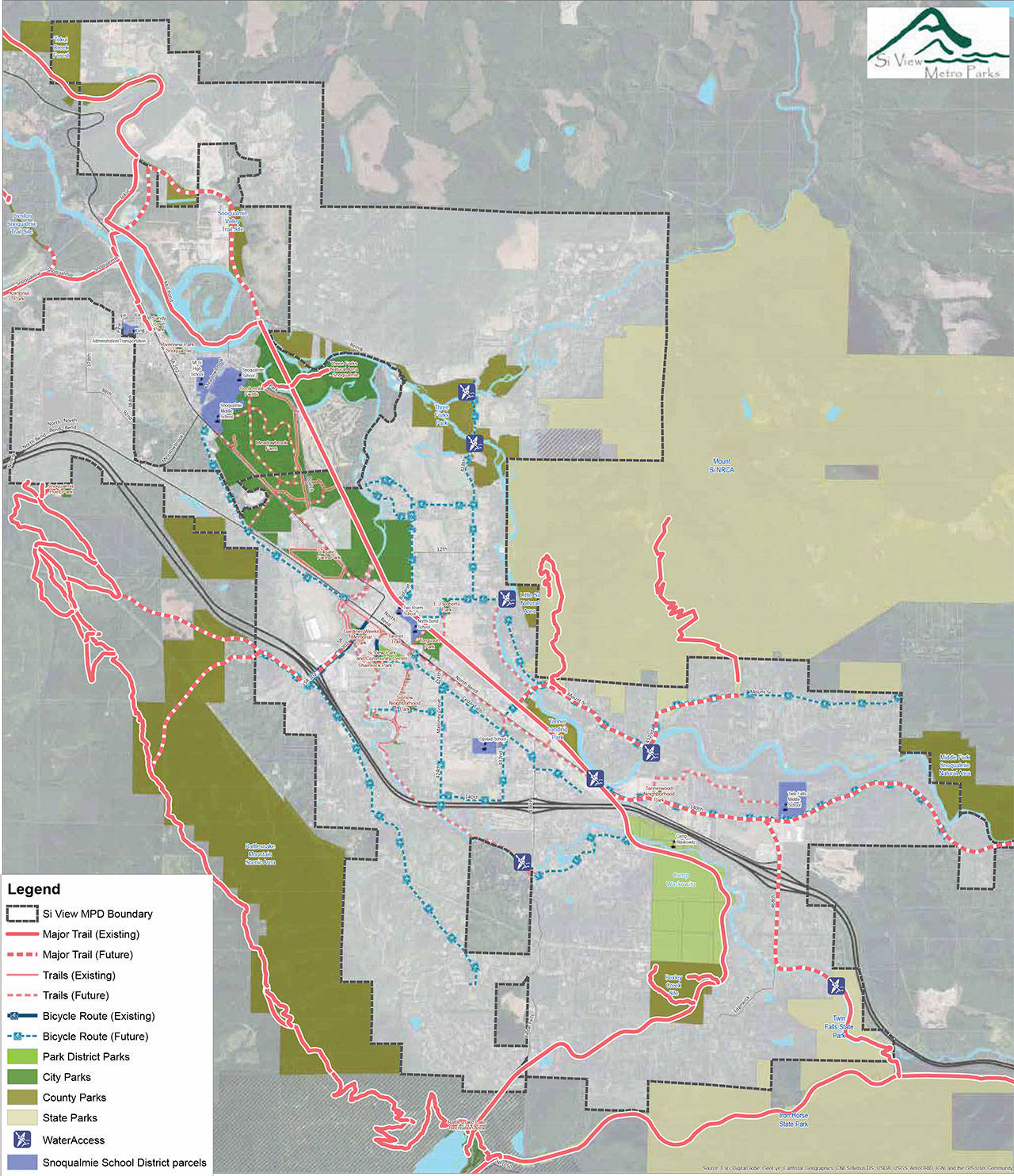Si View Metropolitan Parks district has a large scale project to improve parks and open space in the works thanks to the voters.
Proposition 1 “To Connect and Protect our Parks,” was approved in the Nov. 6 General Election with 61.17 percent of the vote. The proposition is a $14.7 million capital bond to fund land acquisition and trail projects throughout the district.
According to the Si View Parks website, the proposition will cost a homeowner with an assessed home value of $500,000 a total of $7.87 per month in property taxes.
The park district 2017 comprehensive plans identified many high-priority projects that will be funded by the bond. The priorities were generated from a needs assessment process where the community gave feedback on the types of work they feel is important to the area.
The community needs assessment centered around key core concepts — a connected trail network, a new aquatics facility, and preservation of open space for recreation. Two of the needs will be addressed with the capital bond funding. As previously reported, Si View Metro Parks is also beginning a feasibility study for a new aquatics center, unrelated to the capital bond projects.
Si View Metro Parks goals include developing and linking area trails to create a complete network of paths with district access available to anyone on foot. The funding will give the district resources to buy land for preservation as open space and create new parks connected to the trail system. The funding will allow the continued maintenance and upgrades to existing facilities.
In September, Si View Parks executive director Travis Stombaugh gave a rough estimate for how the funds would be allocated. He said about 44 percent would go to future parks and land acquisitions, 43 percent would be used for park and facility improvements, and 11 percent would be used for local and regional trails.
With the bond approved, the district will begin designing and implementing the projects. In a press release, the district announced it will do two rounds of bond sales three years apart to raise funds for the projects. Staggering the bond sales will help scheduling and project quality, the district said, because projects will be timed to match revenue from grants, collaborative partners or adjacent development.
The district is now holding work plan sessions and to determine which projects can be completed first. Stombaugh said 85 percent of the proceeds of the bond must be used within the first three years, which is why they are working to identify priority projects.
Stombaugh said the district will look for projects that line up with grants, take advantage of economies of scale, and possibly collaborate on projects with other organizations to make bond dollars go further than they would alone.
The work outlined in the capital bond is estimated to take about six years until total completion. Stombaugh said people should start seeing some of the first projects implemented before the end of 2019.



